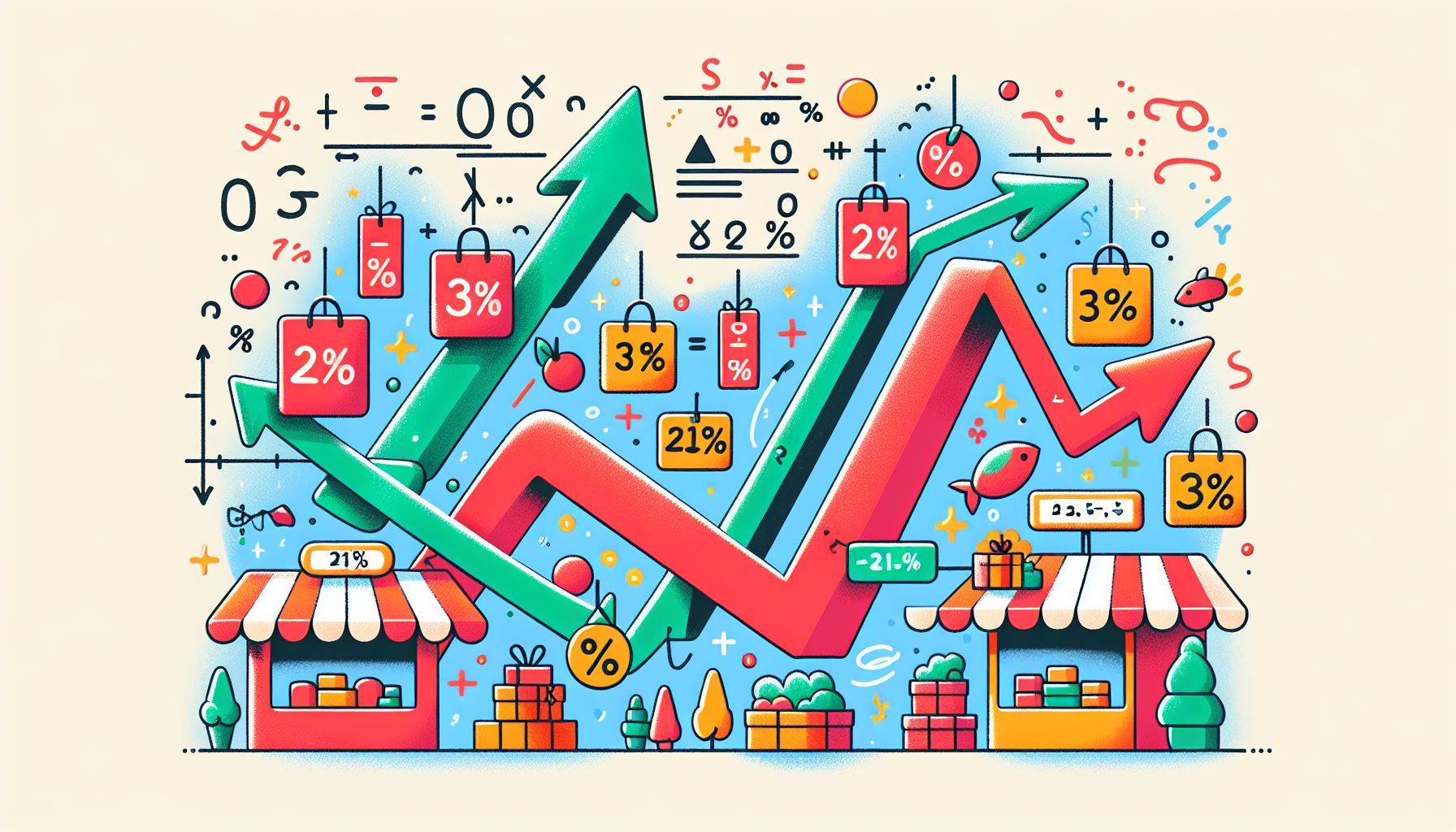Percentage Calculator
The Percentage Calculator tool allows you to quickly and accurately calculate percentages, making it easier to find percentage values, percentage increases, and percentage decreases. This tool is perfect for students, teachers, business professionals, and anyone who needs to perform percentage calculations for academic, financial, or personal purposes. The process is straightforward, providing clear and precise results.
Share on Social Media:
Efficient Percentage Calculator: Simplify Your Math Instantly
Need to determine a discount, calculate interest, or adjust a recipe? The percentage calculator is your go-to tool for quick and accurate solutions. Across finance, shopping, and even cooking, percentages frame our decisions—fortunately, with a reliable percentage calculator, turning those tricky numbers into actionable insights is just a few clicks away. This article unpacks how a percentage calculator simplifies complex calculations, delivering the results you need when you need them.
Key Takeaways
The percentage formula P V1 = V2 is essential for solving various real-life percentage problems, and mastering it allows for straightforward calculation of increases, decreases, and comparisons.
The Percentage Calculator by PagesTools.com simplifies complex percentage calculations and can handle a wide range of operations, including converting fractions to decimals and calculating percentage increase, decrease, and sales tax adjustments.
Understanding the difference between percent change and percentage-point change is vital to prevent errors in interpretation, and tools like the Percentage Calculator facilitate efficient and accurate percentage-based computations.
Mastering the Percentage Formula: A User’s Guide

Percentages are a fundamental part of our numerical world, used in various fields such as finance, statistics, and even cooking! It all starts with the percentage formula, represented as P V1 = V2, where P is the percentage, V1 is the original value, and V2 is the resulting value after applying the percentage. By mastering this formula, you can tackle any percentage problem with confidence and ease.
But what do the terms ‘percent’ and ‘percentage’ mean? Let’s explore.
Understanding the Basics: Percent vs. Percentage
Despite their similar appearance, ‘percent’ and ‘percentage’ are used in slightly different contexts. A percentage is a number or ratio that represents a fraction of 100, allowing us to compare a portion with a whole. The term ‘percent’ accompanies a number and signifies ‘per 100’ or ‘parts per 100’. On the other hand, ‘percentage’ is generally not used with a number, except when discussing ‘percentage points’.
Now that we’ve got the basics down, let’s delve deeper into the mathematics behind percentages.
The Mathematics Behind Percentages
Understanding the mathematics behind percentages is crucial. The basic components of the percentage formula include:
A percentage (e.g., 40%)
The original whole (e.g., a pack of cookies)
The part of the original whole the percentage represents (e.g., part of the pack of cookies)
To calculate a percentage increase or decrease, we convert the percent into a decimal and add (or subtract) it from 1.
Now, let’s see how these calculations apply in our daily lives.
Real-Life Applications
Percentages pop up in various aspects of our daily lives. From financial aspects like discounts in stores and bank interest rates to statistical representations in the media, percentages make information easily digestible. They are crucial in:
Comparing fractions with different denominators
Expressing one quantity as a percentage of another
Percentage calculations also find use in the unitary method to simplify comparisons.
Now that we’ve mastered the basics, let’s unveil a tool that will make percentage calculations a breeze.
The Percentage Calculator Unveiled by PagesTools.com

Enter the Percentage Calculator by PagesTools.com, a specialized tool designed to simplify complex percentage calculations. This tool is versatile, capable of finding the third value when any two of the other values are provided, making it adaptable to different percentage problems. But how does this tool work exactly? Let’s find out.
How to Calculate Percentages Effortlessly
The Percentage Calculator makes solving percentage problems a breeze. From calculating tips, sales prices, and discounts to determining the effects of an increase or decrease in a value by a given percent, the Percentage Calculator has got you covered.
But how about converting between fractions and decimals? Let’s explore.
From Fractions to Decimals: Converting with Ease
Converting fractions to decimals (and vice versa) can be a daunting task for many, but not with the Percentage Calculator. To convert a fraction to a decimal form, simply divide the numerator (the top number) by the denominator (the bottom number). With this tool by your side, percentage calculations just got a whole lot easier!
But what about when we want to calculate percentage increase or decrease? Let’s simplify that next.
Percentage Increase and Decrease Made Simple

Percentage increase and decrease calculations are essential to understand changes in values. A percentage increase refers to the growth of a value from its original to its new number, expressed in parts per hundred. Subtract the final value from the initial value, divide by the initial value, and multiply by 100, and you’ll have your percentage decrease.
What about when it comes to your shopping cart?
Calculating Discounted Prices
Who doesn’t love a good discount? With the Percentage Calculator, you can calculate the discounted price by decreasing the original price by the percentage of the discount.
But what happens when we factor in sales tax?
Adjusting for Sales Tax
Sales tax is a percentage of the item cost added to the original price, determining the final cost the consumer will pay. To find the total cost including sales tax, you add the percentage of the sales tax to the original value.
Now that we’ve covered how to calculate percentage increase and decrease, let’s delve into percentage points.
Percentage Points Explained

Percentage points are a unit of measure used to express the absolute difference between two percentages. They indicate the amount of change as opposed to the relative rate of change. In this context, it’s important to note the difference between percentage points and the percent sign, which is a symbol used to represent percentages.
But how do we differentiate between rates and points?
Differentiating Between Rates and Points
While percentage points quantify the actual amount of change, percent change describes the rate of change as a relative measure. Distinguishing between these two is crucial to prevent potential discrepancies that might arise from using the term ‘percent’.
Applying Percentage Points in Calculations
Percentage points can be applied in calculations to express absolute differences. For instance, a change from 5% to 9% is correctly reported as a 4 percentage point rise.
Now, let’s move on to how we can compare two numbers using percentages.
The Art of Comparing Two Numbers with Percentages
Comparing two numbers using percentages can provide valuable insights. The percentage difference expresses how much one number differs from another as a percentage of their average value.
But how do we form equations for these comparisons?
Equations for Comparison
To calculate the percent difference between two values, find the difference between them, calculate their average, and then divide the difference by the average, finally multiplying by 100.
But how do we interpret these results?
Interpreting the Results
Interpreting the results of percentage difference calculations can reveal the relative closeness of the two values. The percentage difference shows the extent of difference between two values relative to their average, providing a metric to assess comparative variation.
Now, let’s take a look at some advanced use cases.
Advanced Use Cases: Percent Error and Absolute Value

Percent error and absolute value are advanced use cases of percentages. Percentage error indicates the size of error in a measurement; a smaller percentage error represents a measurement close to the actual value, whereas a larger percentage error implies a significant deviation from the actual value.
How do we compute this percent error?
Computing Percent Error
Percent error calculation is used to determine how much an experimental or observed value differs from a true or theoretical value. To calculate percent error, follow these steps:
Subtract the theoretical value from the experimental value.
Take the absolute value of the difference.
Divide by the theoretical value.
Multiply by 100 to get the percentage error.
But what is the role of absolute value in these problems?
Absolute Value in Percentage Problems
The absolute value in percentage problems helps to measure the deviation magnitude and ensure the error is a positive quantity, reflecting the true scale of the error without considering direction.
Now, let’s share some tips and tricks for efficient percentage calculations.
Tips and Tricks for Efficient Percentage Calculations
Efficient percentage calculations can make your life easier, especially with complex calculations. Some tools that can help you with percentage calculations include:
Percentage Calculator by PagesTools.com
Online shopping websites that automatically calculate discounts and prices
Comparison websites that show discount percentages on different products
These tools were inspired by real-life needs such as online shopping, comparing prices, and calculating discounts on different websites.
But how can we simplify complex percentages?
Simplifying Complex Percentages
Complex percentages can be simplified by replacing them with simpler terms like ‘doubled’ or ‘tripled’. Using simplified language when discussing percentage changes can help reach and be understood by a broader audience. But what are some common mistakes we need to avoid?
Avoiding Common Mistakes
A common mistake to avoid is confusing percent change with percentage-point change. Properly applying the rules of comparing digits and appreciating the significance of place value is necessary to avoid errors when interpreting comparisons between two percentages.
Now, let’s see the Percentage Calculator in action through some practical examples.
The Percentage Calculator in Action: Practical Examples
Let’s put the Percentage Calculator to the test with some practical examples.
One of the most common applications of percentages is in figuring out interest rates.
Figuring Out Interest Rates
Interest rates reflect the cost of borrowing money, expressed as a percentage of the principal amount, and affect the total interest paid on any loan. With the Percentage Calculator, you can determine the real interest rates on loans when only monthly payment information and total price are available.
But what about multiplying and dividing percentages?
Multiplying and Dividing Percentages
Multiplying and dividing percentages might seem complicated at first glance, but it’s rather straightforward with our Percentage Calculator. After converting the percentage to a decimal, it can be multiplied with or divided by another number with ease.
Lastly, let’s navigate other methods of percentage calculation.
Navigating Other Methods of Percentage Calculation
Other methods such as ratios and the unitary method can also be used for percentage calculation. Ratios represent the relationship between different quantities and can be converted to fractions or percentages for easier comparison.
The unitary method involves multiplying the given fraction by 100 to compute the percentage, which is an alternative to adjusting the fraction’s denominator to 100.
Summary
We’ve journeyed through the world of percentages, understanding their fundamentals, the importance of percentage points, the art of comparing two numbers using percentages, and advanced use cases such as percent error and absolute value. We’ve also explored the Percentage Calculator by PagesTools.com and applied it in practical examples. Remember, mastering percentages opens a world of possibilities and simplifies numerous real-world scenarios.
Frequently Asked Questions
What is a percentage?
A percentage is a number or ratio that represents a fraction of 100, allowing comparison between a portion and a whole.
How do I calculate percentage increase or decrease?
To calculate percentage increase or decrease, convert the percent into a decimal and then add it to 1 for increase or subtract it from 1 for decrease. This will give you the final percentage increase or decrease.
What is the difference between percent change and percentage-point change?
The main difference between percent change and percentage-point change is that percent change measures the rate of change as a relative measure, while percentage points quantify the actual amount of change. Therefore, percent change is a relative measure, while percentage points represent an absolute amount of change.
How do I compute percent error?
To compute percent error, subtract the theoretical value from the experimental value, take the absolute value of the difference, divide by the theoretical value, and then multiply by 100 to get the percentage error.
How can I avoid common mistakes in percentage calculations?
To avoid common mistakes in percentage calculations, be mindful of the difference between percent change and percentage-point change, and pay attention to the significance of place value in comparing two percentages.